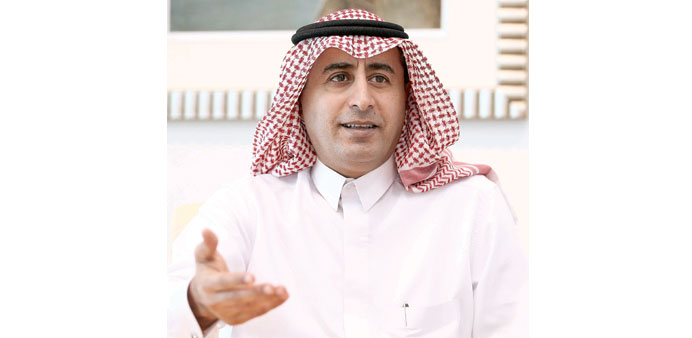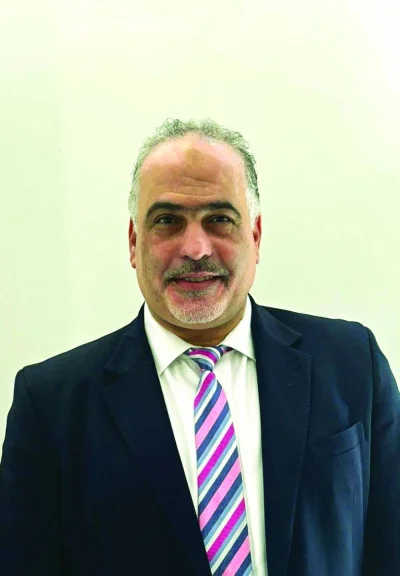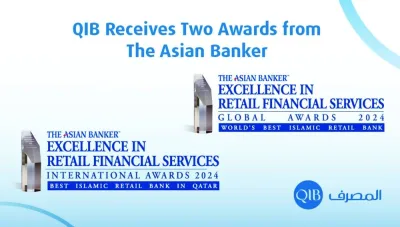The author is senior vice-president and group chief economist, Commercial Bank. The views expressed are his own.
The outlook for Qatar’s economy remains positive despite falling markets and cheap oil
By Dr Abdulaziz A al-Ghorairi
Stock markets around the world have taken a downward spiral over the last few weeks, triggered by a large sell-off in China. China’s main index witnessed a fall of around 40% since its highs in June 2015 and developed markets have followed in turn over concerns about growth in the world’s second largest and the fastest growing economy.
The Dow Jones Industrial Average, major European stock indices and Asian markets have all registered significant drops in the wake of China’s stock market decline.
Slower growth in China and developed economies has impacted oil markets too. While the price of crude oil seemed to stabilise after reaching its lowest price since March 2009 in mid-January this year, oil took a fresh beating to hit new lows in August as concerns over the supply and demand gap increased.
On the supply front, the lifting of Iranian sanctions is expected to bring fresh supply to the market. On the demand side, China’s recent currency devaluation suggests all is not well with the economy of the world’s largest oil importer and the economies of Europe and other developing countries continue to face challenges.
The stock markets of oil exporters have also taken a beating, with the Saudi market dropping 21% since oil prices moved downwards, despite opening up to foreign investors.
Decreasing oil prices are expected to strengthen the dollar and result in a corresponding relative decline in the currencies of a number of emerging market economies who are particularly dependent of commodity exports.
Falling oil prices also threaten to create deflationary pressures in economies such as Japan and Europe where governments have spent trillions of dollars in boosting economic growth and yet levels of inflation have fallen to zero or less.
Moving closer to home, the Saudi Arabian economy is heavily dependent on crude oil and vulnerable to a steep and sustained decline in oil prices. The energy sector accounts for approximately 90% of all Saudi exports and most importantly, it funds around 80% of the government’s budget. According to the IMF, Saudi Arabia will run a budget deficit of about $140bn in 2015 (20% of GDP). In order to make up the deficit, the country is tapping its pool of foreign currency reserves, eating up more than $60bn this year so far. Recently it has issued bonds worth SAR20bn ($5.33bn) in an attempt to maintain spending plans but Saudi Arabia is at risk with oil prices unlikely to increase in the short term.
Dubai’s government used funds from its limited oil reserves to develop infrastructure and political stability, pro-business attitudes and liberal economic regulations have helped it to become a global financial hub. However, Dubai’s open economy is prone to external shocks with it being more dependent on global trade and capital flows.
According to the IMF, despite strong economic growth, Dubai is still vulnerable to a major downturn in the global economy.
Qatar, by contrast, appears largely immune to cheap oil and pessimism in global markets. While Qatar is a significant oil producer, it is predominantly a gas exporter and the price of natural gas exports are only weakly correlated with oil. Qatar has historically sold most of its LNG through long-term sales and purchase agreements (SPAs) with pricing formulas based on average oil prices over several years that provide more stability than crude prices. Long term SPAs are believed to guarantee high and stable revenues for Qatar until 2020-2025 and Qatar is in a solid position compared to other hydrocarbon producers both regionally and globally.
Asian countries account for approximately three quarters of Qatar’s total LNG exports, with Japan the largest market, followed by India, South Korea and China. Qatar began exporting LNG to China in 2009 and is now the country’s largest LNG supplier, with 6.7mn tonnes per annum (mpta). China’s LNG imports are likely to triple to 60 mpta by 2020, as only a fraction of its population currently use gas and there is a clear policy drive towards cleaner fuels, both auguring well for Qatar in the long term.
Qatar’s economic growth has averaged 16% over the past decade and GDP per capita has reached $99,369 making it the highest per capita income country. Despite lower oil prices, Qatar’s growth remains robust and is supported by the continued vigour of the non-hydrocarbon sector, with the government realising that alternative forms of wealth creation will eventually have to replace finite hydrocarbon resources.
Qatar’s Ministry of Development, Planning and Statistics (MDPS) revised its real growth prediction for 2015 in June this year marginally down to a rate of 7.3%, yet this is still 1.2% higher than the rate observed in 2014.
As in 2014, construction is expected to continue to record the strongest growth among all economic sectors in 2015 at 13.6% and remain high from the rollout of planned public investment projects. Manufacturing was sluggish in 2013 and 2014, but growth rates will rebound in 2015 and 2016, driven mainly by the planned capacity expansion in downstream activities.
The service sector contributes heavily to Qatar’s GDP and its share in aggregate output will continue to rise on the back of the manufacturing and construction sectors.
Qatar’s banking sector also remains robust and despite growth in deposits slowing down in recent quarters, positive loan growth momentum has continued.
Even at current oil prices, the MDPS expects that Qatar’s state budget might break-even this year and Qatar also has huge fiscal reserves to cover any deficits in the near term.
The government follows a conservative approach to fiscal planning and has already factored in the low oil price environment. According to preliminary figures for the fiscal year 2014 to 2015, lower oil and gas revenues were offset by higher investment income, which at QAR111.7bn is more than double the targeted revenue for the year. The government has also decreased its expenditure by 18.1% over the previous year with cuts in defence, interest payments and health spending.
The Qatar Central Bank’s gross foreign currency reserves stood at QAR156.6bn at the end of 2014, and although currency reserves began to fall from November 2014, the high reserve base provides a strong cushion to finance any short term budget deficit.
To conclude, Qatar’s economy is vibrant and resilient to external shocks due to its stable hydrocarbon revenues, continuous government investment on infrastructure projects that diversify the economy and a large surplus fund. The country has used its resources to hedge against uncertainty and build a legacy for future generations. By understanding the risks of tying public expenditure to fluctuating hydrocarbon revenues, Qatar established sizeable financial endowments early on to provide continuity and predictability of funding for essential services such as health and education. Despite falling global markets and cheap oil the outlook for Qatar remains positive.



